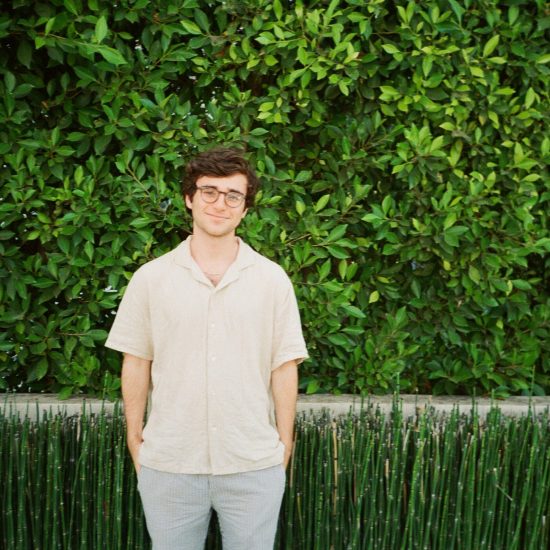In case you didn’t hear, the Yankees made somewhat of a splash this off-season.
They traded for Juan Soto, the 25-year-old superstar who looks poised to be the greatest left-handed hitter of my generation, dealing away four promising young pitchers and Kyle Higashioka for one season of an All-World bat. The fit seemed almost perfect: an effervescent, championship-tested Soto would look brilliant in pinstripes, his trademark shuffle and otherworldly hitting built for the dramatics of Yankee Stadium.
His power from the left side seems tailor-made for the Stadium’s short porch, the 314-foot outpost that draws the ire of so many opposing fans.
The Bombers even added two other lefty-swinging outfielders to buttress their needs at that position, dealing for Trent Grisham and Alex Verdugo. The new trio’s collective prowess, it seemed, could remake the outfield into a unit that would finally utilize the team’s natural advantage with the porch.
But the advantage may not be so pronounced.
Soto would actually have over 20 fewer homers had he spent his entire career hitting in Yankee Stadium. Grisham would only have watched two more sail over the fence. Verdugo, maybe the biggest beneficiary, would have nine more bombs. How will the new-look outfield shape up next year?
The Stadium
The effects of the short porch won’t surprise anyone. It boosts home runs from both left-handed and right-handed hitters, making Yankee Stadium a potential nightmare for opposing pitchers on nights when the wind is blowing out and the guy in the batter’s box has a fine-tuned game plan. Thus, the home run park factor (in which 100 is average) has been a consistent net positive for hitters, particularly lefties. Over the last three seasons, Yankee Stadium ranks as the second-most favorable home run ballpark for left-handed hitters, trailing only the Great American Ballpark in Cincinnati.
What did surprise me, however, is the stadium’s total park factor—including all balls in play instead of just home runs. For lefties, it falls in at a below-average 96 over the past three seasons, which means that some hitters are losing hits when they get to the Bronx. While the ballpark’s right and left field fences are 314 and 318 ft., respectively, the left-center and right-center field fences can be cavernous, standing at 399 and 385 ft.
The below-average numbers outside of the home runs indicate a significant trend: singles and doubles can be a bit harder to come by for lefty hitters in the Bronx.
The Guys Who Made It Work
A dearth of talented left-handed hitting has plagued the Yankees since they last made the World Series. The days of Robinson Canó and Hideki Matsui are long gone, and the Bombers have relied on the somewhat spotty contributions of Brett Gardner, Didi Gregorius, Brian McCann, Aaron Hicks, Joey Gallo, and Anthony Rizzo to provide thump from the left side. Since 2015, the Yankees have only had eight seasons of 20+ home runs from lefties and one season of 30+ bombs, numbers you would expect to be higher given their home-field advantage.
Let’s examine some of those seasons and try to isolate what worked for these hitters.
Though these hitters are markedly different, most notably in Rizzo’s seismic lead in the barrel rate category, they all share a few key characteristics. Each season saw hitters pull the ball more than 37% of the time and put the ball in the air at least 20% of the time. Gardner’s 2019 season, it’s worth noting, was a career-high in home runs and now looks quite a bit skewed by the baseball that year.
There’s nothing surprising at all about this data: to take advantage of the short porch, you have to pull the ball in the air at above-average rates (or enjoy the benefits of a supercharged baseball). When lefty hitters struggle at the stadium, it is sometimes because they get away from the pull-happy profile that provided value (see: Rizzo, 2023, in which his pull and fly-ball rates both dropped almost 5 percent).
The Yankees have clearly heard the cries of fans clamoring for left-handed thump, and they’ve delivered in the form of Soto, Grisham, and Verdugo. Having weathered the failure of their last major lefty acquisition (Gallo), they appear ready to charge ahead in 2024 with an improved group.
The Yankees need hitting. Badly. Last year, their 94 team wRC+ ranked 19th in the majors. Even worse was their 91 wRC+ from the left side, which was 24th in the league. Aaron Judge and Gleyber Torres were the only everyday hitters who provided above-average contributions at the plate all season
So a lot is riding on the acquisitions of the three new lefties who will man the Yankee outfield in 2024. How do their respective profiles fit in the Bronx?
As Neil Paine pointed out in The Messenger, Soto has never been a hitter who pulls the ball at high rates. A judicious and well-rounded batter, he sprays plenty of homers and hits to the opposite field—although his Home Run Derby performance proved he can occasionally tailor his swing a certain way. Will the Yankees approach Soto with statistics that show the benefits of pulling the ball in Yankee Stadium? Who knows. Either way, he’ll be a massive boon to the offense.
Verdugo, who would be the largest beneficiary had he played his entire career in Yankee Stadium, doesn’t appear to have particularly exciting underlying statistics to take advantage of the short porch. But just like Grisham, the Yankees will value his advanced approach at the plate and perhaps look to encourage him to get the ball in the air on his pull side.
Thus, the Yankees’ new bats aren’t perfectly tailored for the premises, but it may not matter anyway. The once-below-average offensive group just got a lot better.

